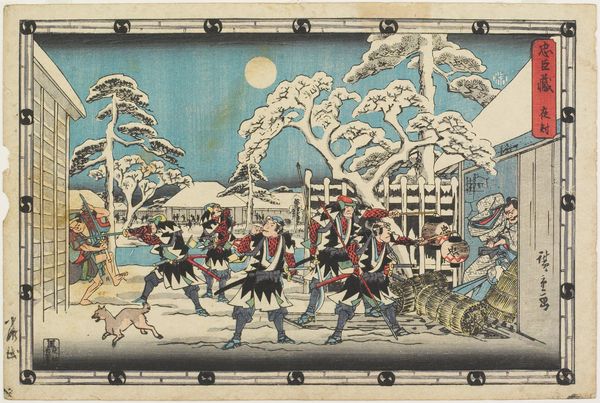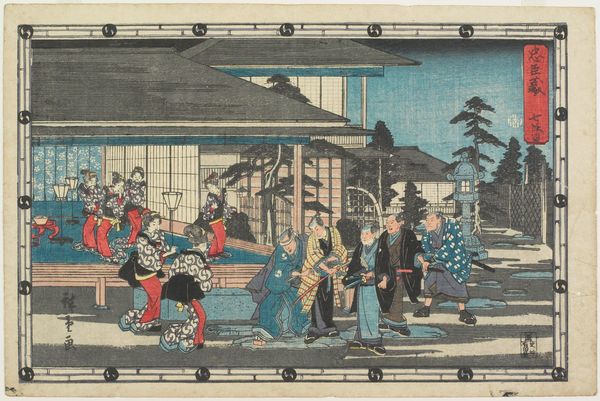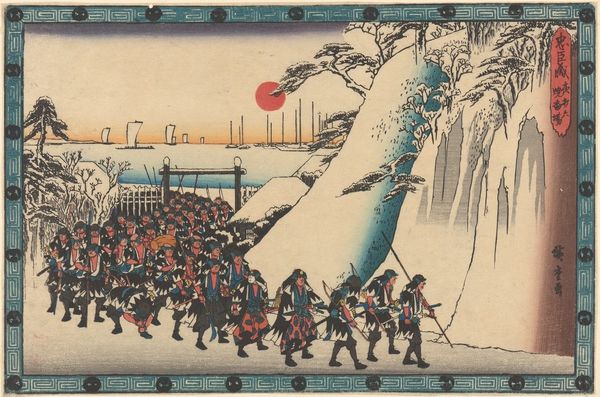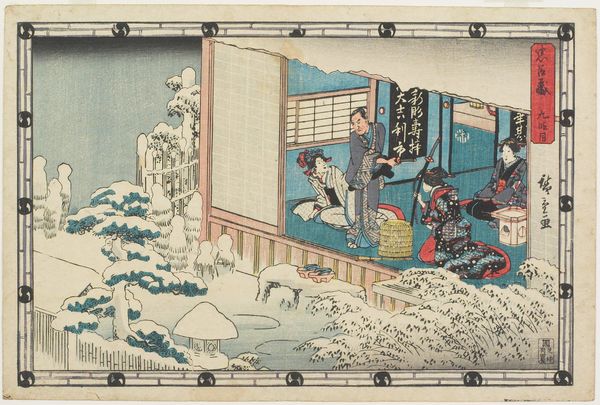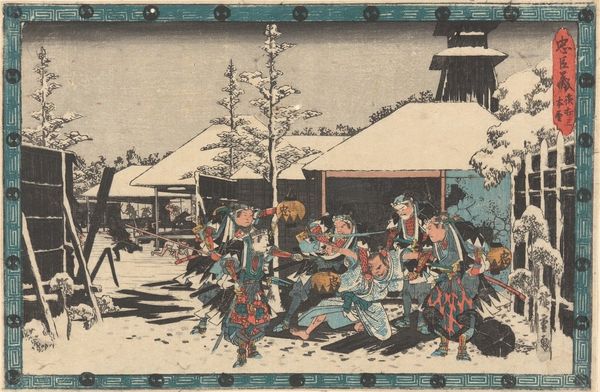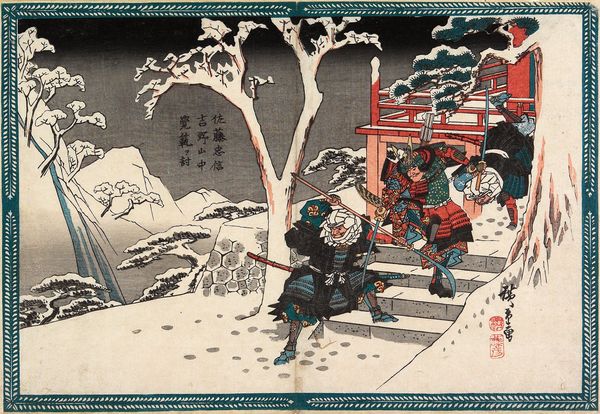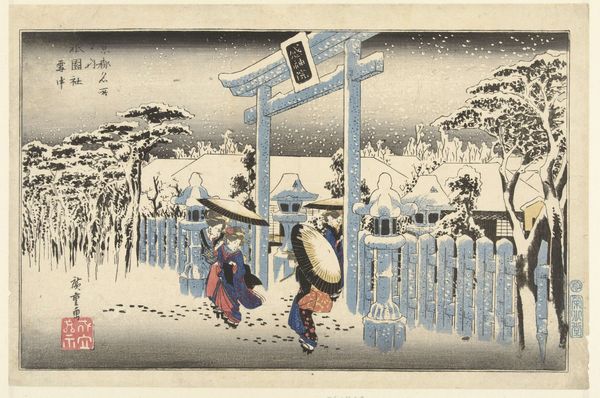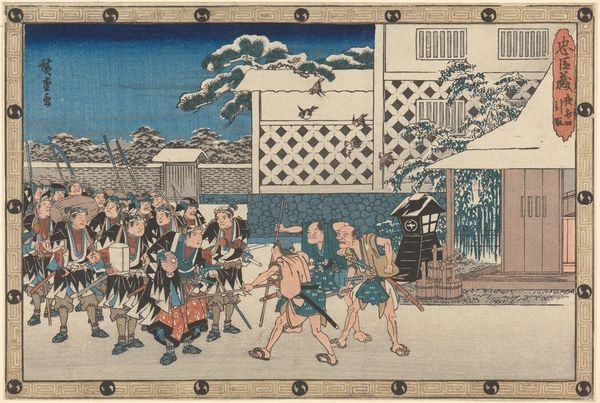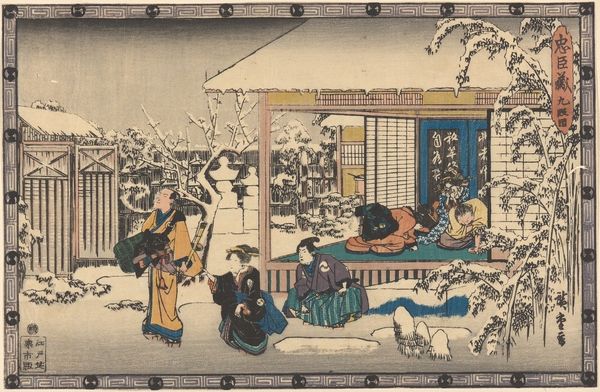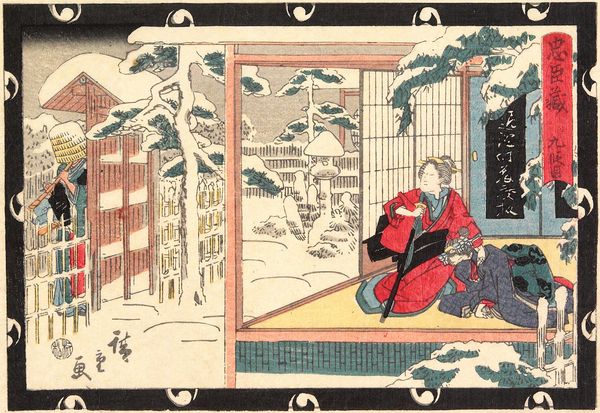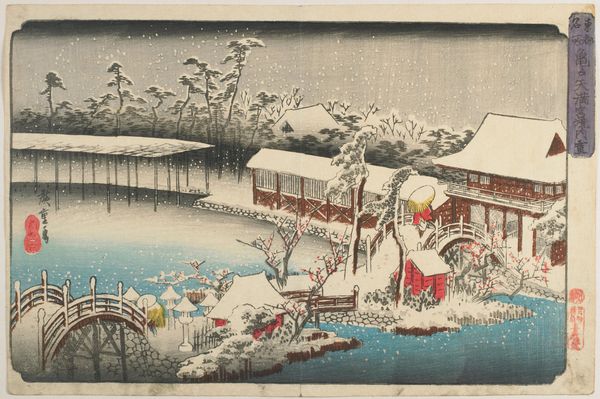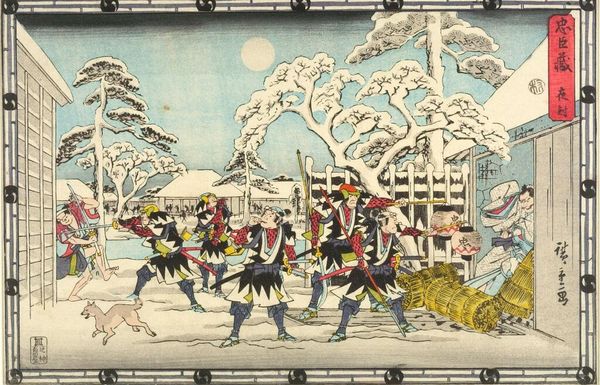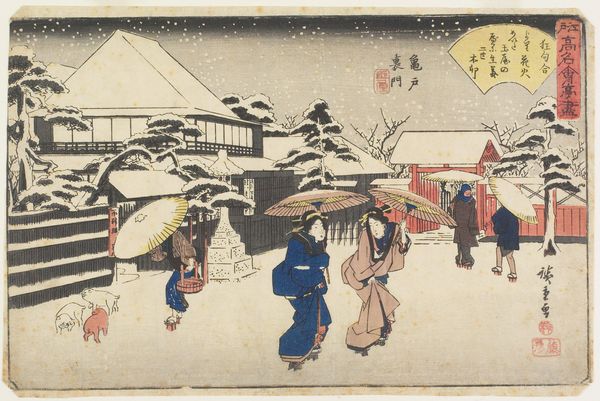
print, ink, woodblock-print
#
narrative-art
# print
#
asian-art
#
landscape
#
ukiyo-e
#
japan
#
figuration
#
ink
#
woodblock-print
#
mixed media
Dimensions: 8 15/16 × 13 11/16 in. (22.7 × 34.8 cm) (image, horizontal ōban)
Copyright: Public Domain
Editor: Here we have Utagawa Hiroshige’s "Act V," a woodblock print from around 1843 to 1847, now at the Minneapolis Institute of Art. The print shows a night scene in the snow, figures in what looks like a tense encounter. I’m curious, what narrative do you see playing out in this print, and how does it reflect the societal values of the time? Curator: Well, seeing this print as a historian, it's fascinating how it represents not just a specific story but also the values of loyalty and sacrifice that were so crucial in shaping samurai culture and its perception. This particular act refers to the story of the 47 Ronin. Consider how these narratives, circulated through prints, served to reinforce societal expectations of honor and duty, specifically to comment on the feudal system. Do you see how the setting – the stark winter landscape – adds to that atmosphere? Editor: Definitely. It's almost theatrical, enhancing the drama. So, the print served a larger cultural function beyond just depicting an event? Curator: Precisely. Ukiyo-e prints like this one played a significant role in disseminating moral tales and solidifying the cultural and political status quo. The print becomes a vehicle for popularizing and idealizing particular codes of conduct, offering a visual form of moral instruction and communal identity. What do you notice about how the figures are depicted? Editor: Their faces seem stoic. And, their stance is so rigid and committed, suggesting a profound sense of purpose beyond the immediate violence. Curator: Exactly! So think about it: How did this popularisation, the romanticized imagery, possibly influence later interpretations of these historical events, and shape societal expectations of behavior? Editor: That's something to ponder - I didn’t consider art as a type of popular history, with all the associated potential for both insight and misinterpretation. Curator: Indeed. Art, then, isn't merely a mirror but an active shaper of how we understand the past and construct our present.
Comments
No comments
Be the first to comment and join the conversation on the ultimate creative platform.
